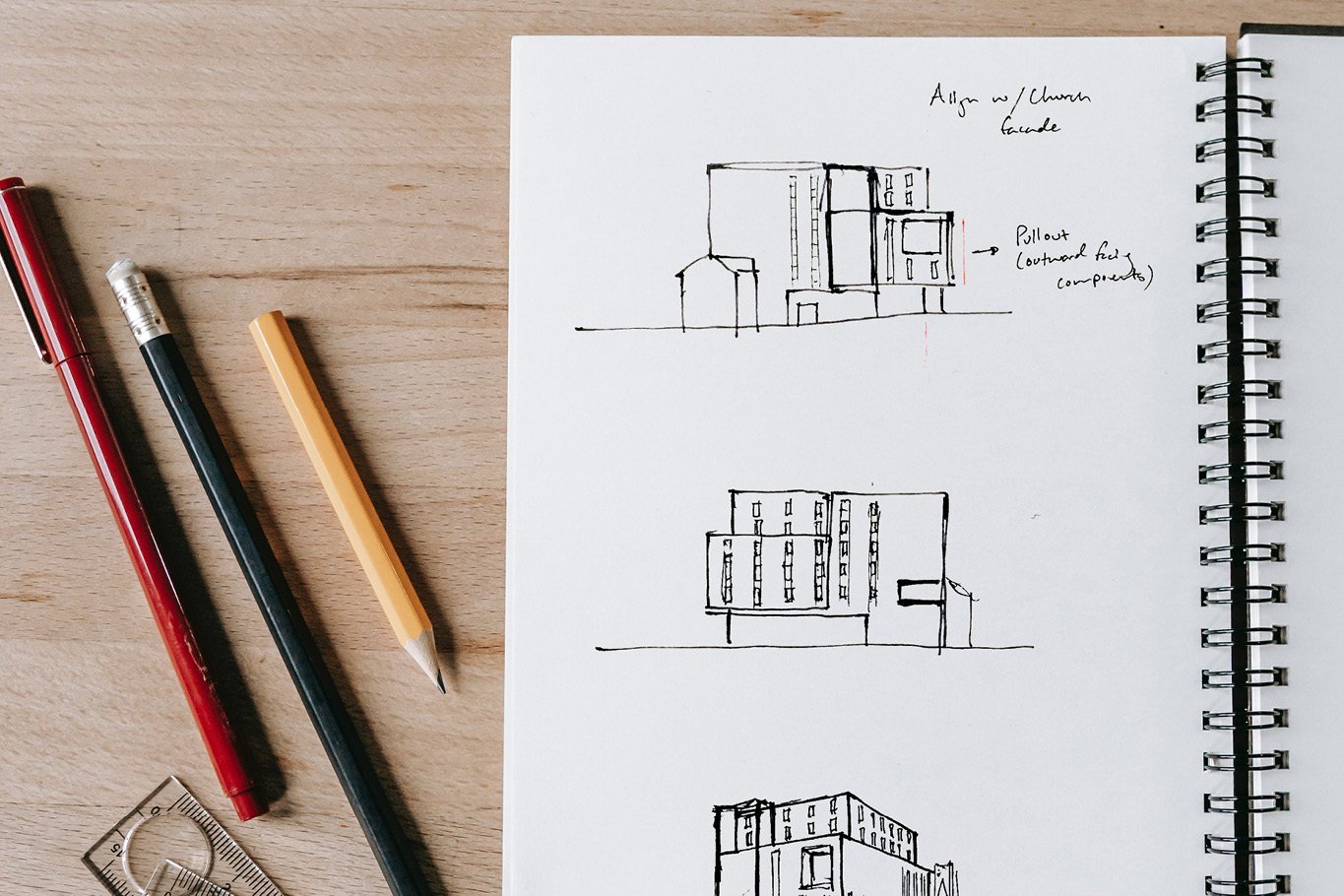Along with cost, schedules are often the greatest concern of anyone starting a building project. While the ideal project delivers on time, problems can occur in the design and construction process that slow a project’s timeline. Knowing how to prevent these problems is the best way to keep a project on track.
We believe in establishing clear expectations at a project’s onset. That’s why we are educating anyone entering the design process and addressing the problems that may occur.
In this article, you will learn about four problems that slow the design process:
- Lack of preparation
- Internal disagreements
- Unclear Communication
- Changes to the project scope
After reading, you will be better prepared to address problems before they arise, keeping your project moving forward.
4 Problems that Slow the Design Process
1. Lack of Preparation
Efficient design processes occur when the architect has all the necessary preliminary information. If you want to expedite the design process, you should have a firm understanding of your project’s budget, program, and schedule.
In Pre-Design, your architect can help you establish this information. A programming study will help you identify your needs and quantify them into spaces. Likewise, a feasibility study can help you determine budget and schedule requirements.
These additional studies take time and may lengthen the pre-design process. If you have all the necessary information in place, your architect can begin developing schematic concepts earlier.
2. Internal Disagreements
Successful projects require forethought, communication, and a cohesive vision. Internal disagreements about your vision and goals can slow the decision-making process, especially as you enter Schematic Design and Design Development.
In the early stages of the project, your architect should engage stakeholders through visioning workshops and benchmarking activities. These activities build group consensus and establish goals that drive the project forward.
Although these initial meetings take time, they lead to a more efficient design process.
Additionally, form a core team that works with your architect and oversees the design process. The core team should represent a cross-section of your organization, so they can easily inform stakeholders about important decisions. For example, we often recommend including individuals from various departments or internal teams, along with leadership.
Your architect will refer to your project’s overarching goals to help the core team make decisions. Without a set of agreed-upon goals, you increase the risk of time-consuming internal disputes.
3. Unclear Communication
Efficient communication is the foundation of the design process.
Although design teams include many people, your project manager is your main point of contact. Throughout the design process, your project manager will meet with your core team on a weekly or biweekly basis.
Your project manager will also need a contact for regular, day-to-day communication.
In the early stages of the project, establish a communication liaison who will relay information from the project manager to your team. Additionally, create a communication plan for delivering information to stakeholders outside your core group of decision-makers.
Communication will become even more important in construction, and you should prepare by creating a plan for addressing submittals, change orders, and discussions with your contractor.
In short, a single point-of-contact on both ends increases efficiency. Without a communication liaison, signals cross and you may miss important information, potentially impacting your schedule.
4. Changes to the Project Scope
Changes to the project’s budget, program, or direction can also impact your project’s schedule—especially when these changes occur later in the design process.
In Pre-Design and Schematic Design, designs and concepts are unofficial and malleable, making it easier to make changes. As you start Design Development, the design will become more detailed and refined, and in Construction Documents, your architect will begin finalizing plans in writing.
Large-scale changes in the later design phases will cause your architect to backtrack, disrupting the schedule. Of course, an architect’s job is to solve problems, and they can manage changes later in the process.
If you need to make a change, just remember it may have schedule implications.
Ready to Learn More?
Building projects can be long and complex. With many moving parts, problems that impact the schedule will likely arise.
Set yourself up for success by addressing these problems before they arise. By establishing clear guidelines, a cohesive vision, and a communication plan, you are more likely to keep your project on track.
Remember: your architect’s job is to solve problems and guide you through this complex process. If you are concerned about your project’s schedule, start the conversation with your architect early, and they will help you find solutions that keep your team organized. Establishing expectations from a project’s onset leads to a successful working relationship.
Want to learn more about building project timelines? Read our advice for expediting the design process. To learn more about our approach, contact us, and start a conversation with an architect.
